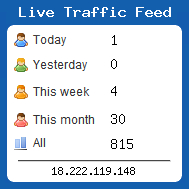PEER REVIEW PROCESS
All manuscripts submitted to Khelie Journal must follow focus and scope, and author guidelines of this journal. The submitted manuscripts must address scientific merit or novelty appropriate to the focus and scope. All manuscripts must be free from plagiarism contents. All authors are suggested to use plagiarism detection softaware to do the similarity checking. Editors check the plagiarism detection of articles in this journal by using a Turnitin software.
The research article submitted to this journal will be peer-reviewed at least 2 (two) or more expert reviewers. The review proccess uses double blind review system. The reviewers give scientific valuable comments improving the contents of the manuscript.
Final decision of articles acceptance will be made by Editors according to reviewers comments. Publication of accepted articles including the sequence of published articles will be made by Editor in Chief by considering sequence of accepted date and geographical distribution of authors as well as thematic issue.
The peer review at Arfannur Journal proceeds in 9 steps with the description as follows.
1. Submission of Paper
The corresponding or submitting author submits the paper to the journal. This is carried out via an online system supported by the Open Journal System (OJS).
2. Editorial Office Assessment
The submitted paper is first assessed by the Khelie editor. The editor checks whether it is suitable with the Journal focus and scope. The paper's composition and arrangement are evaluated against the journal's Author Guidelines to make sure it includes the required sections and stylizations. In addition, an assessment of the minimum required quality of the paper for publication begins at this step, including one that assesses whether there is a major methodological flaw. Every submitted paper which passes this step will be checked by Turnitin to measure the similarity index which leads to plagiarism before being reviewed by reviewers.
3. Appraisal by the Editor-in-Chief
The Editor in Chief checks if the paper is appropriate for the journal, sufficiently original, interesting, and significant for publication. If not, the paper may be rejected without being reviewed any further.
4. Invitation to Reviewers
The handling editor sends invitations to individuals who he or she believes would be an appropriate reviewer (also known as referees) based on expertise, the closeness of research interest, and no conflict of interest consideration. The peer review process at Khelie Journal involves a community of experts in a narrowly defined field of who are qualified and able to perform reasonably impartial review. The impartiality is also maintained by the double-blind peer review employed in this journal. That said, the reviewer does not know the author's identity, conversely, the author does not know the reviewer's identity. The paper is sent to reviewers anonymously.
5. Response to Invitations
Potential reviewers consider the invitation against their own expertise, conflicts of interest, and availability. They then decide to accept or decline. In the invitation letter, the editor may ask the potential reviewer for the suggestion of an alternative reviewer, when he or she declines to review.
7. Review is Conducted
The reviewers allocate time to read the paper several times. The first read is used to form an initial impression of the work. If major problems are found at this stage, the reviewers may feel comfortable rejecting the paper without further work. Otherwise, they will read the paper several more times, taking notes so as to build a detailed point-by-point review. The review is then submitted to the journal, with a recommendation to accept, or reject it, or else with a request for revision (usually flagged as either major or minor) before it is reconsidered.
7. Journal Evaluates the Reviews
The Editor in Chief and handling editor consider all the returned reviews before making an overall decision. If the reviews differ widely between both reviewers, the handling editor may invite an additional reviewer so as to obtain an extra opinion before making a decision.
8. The Decision is Communicated
The editor sends a decision email to the author including any relevant reviewer comments. Reviewer comments is sent anonymously to the corresponding author to take the necessary actions and responses. At this point, reviewers are also be sent an email or letter letting them know the outcome of their review.
9. Final Steps
If accepted, the paper is sent to copy-editing. If the article is rejected or sent back to the author for either major or minor revision, the handling editor will include constructive comments from the reviewers to help the author improve the article. The author should make corrections and revise the paper per the reviewers' comments and instructions.
After revision has been made, the author should resubmit the revised paper to the editor.
If the paper was sent back for revision, the reviewers should expect to receive the revised version, unless they have opted out of further participation. However, where only minor changes were requested this follow-up review might be done by the handling editor.
If the editor is happy with the revised paper, it is considered to be accepted. The accepted papers will be published online and all are freely available as downloadable pdf files.







